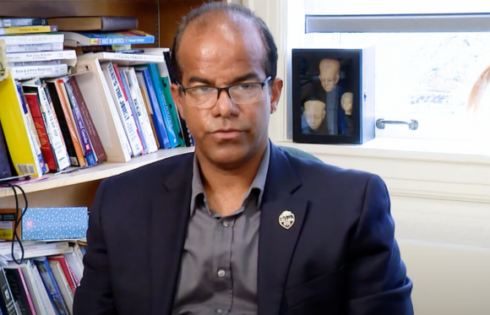
The Biden administration is seeking funding to correct what is called the “teacher salary penalty” in K-12 education – the gap between people who work in teaching and people who work in other professions with equivalent education.
Not so fast, say the authors of a new white paper published by the American Enterprise Institute. There are two problems with making this claim.
The first error is in not comparing like to like.
Policy scholars Andrew Biggs and Jason Richwine explain that studies establishing a teacher pay gap tend to “focus solely on educational quantity” which means that “everyone who has the amount of education — a Bachelor’s degree, a Master’s degree, and so on — is assumed to be equally-educated and meriting the same salary.”
“This assumption makes the number-crushing easier, but also leads to implausible results,” they argue in a column published by Real Clear Policy.
They take readers through some of those implausible results in fields outside of education:
For instance, look at nurse anesthetists. Using the same data and statistical controls that produce the 20% teacher salary gap, nurse anesthetists appear to be overpaid by 74%, even though nurse anesthetists do essentially the same work as physician anesthesiologists at roughly 40% lower salaries. The reason nurse anesthetists — along with air traffic controllers, firefighters, and airline pilots — look overpaid is that they work in technically demanding jobs that allow little room for error, but don’t have extremely high levels of formal education. Electricians, the pay-gap studies would tell us, are as overpaid as teachers are underpaid.
Then they apply that information to the classroom, arguing:
Teacher pay gap studies just aren’t credible if they produce nonsensical results for so many other occupations.
The second error comes in not distinguishing among teachers.
The policy scholars compared pay for teachers to similarly educated employees in non-teaching fields and found that the teachers “receive salaries not statistically different” from their peers.
There is one huge exception to this finding, however.
“STEM degree holders do indeed receive much higher salaries,” than teachers, they write, “often 20% or more.”
STEM is a popular acronym that stands for Science, Technology, Engineering and Math. The scholars found that this pay gap is not just true for teaching vs. STEM degree holders. Rather it is STEM grads vs. virtually all other degree holders.
One way this creates a “teacher salary penalty,” statistically, is that teachers who teach STEM classes are lumped in with teachers who do not.
They argue the STEM premium would justify paying teachers who are degreed in and teach in those subject areas more, but point out that this is not the way the vast majority of public schools currently set their pay scales.
IMAGE: Matej Kastelic/Shutterstock
Like The College Fix on Facebook / Follow us on Twitter




Add to the Discussion